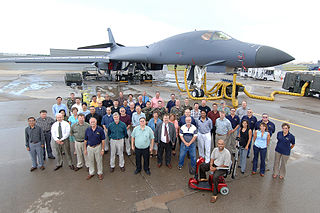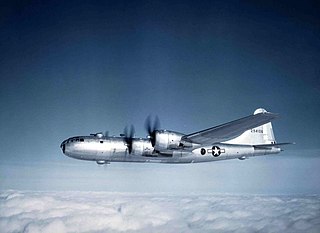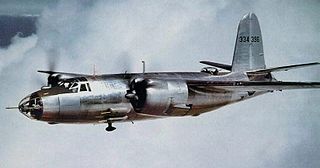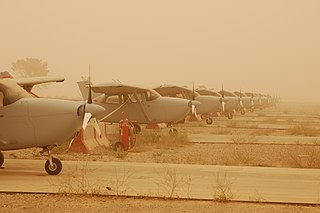
The 478th Aeronautical Systems Wing is an inactive wing of the United States Air Force which was last based at Wright-Patterson Air Force Base, Ohio, where it was inactivated in 2009. The wing was first organized as the 478th Fighter Group, which briefly served as a Fourth Air Force Replacement Training Unit in 1944. The unit was disbanded when the Army Air Forces reorganized its training units into AAF Base Units to reduce manpower requirements in the United States.

The 327th Aircraft Sustainment Wing is an inactive wing of the United States Air Force last based at Tinker Air Force Base, Oklahoma. It was last assigned to Air Force Materiel Command's Oklahoma City Air Logistics Center.

The 382d Bombardment Group is a former United States Army Air Forces unit. It was last stationed at Camp Anza, California, where it was inactivated on 4 January 1946. The group was active from 1942 to 1944 as a heavy bomber training unit. It was reorganized as a very heavy bomber unit and trained for deployment overseas. However, it arrived at its overseas station too late to see combat, and returned to the United States, where it was inactivated.

The 338th Bombardment Group is a disbanded United States Air Force unit. It was last active with Continental Air Command at O'Hare International Airport, Illinois on 27 June 1949. It was first activated during World War II as the 338th Fighter Group and served primarily as a training unit until it was disbanded in 1944. The group was reconstituted in the reserves in 1947, but was inactivated when military spending was reduced in 1949.

The 332d Fighter-Interceptor Squadron is an inactive United States Air Force unit. Its last assignment was with the 4683rd Air Defense Wing at Thule Air Base, Greenland, where it was inactivated on 31 May 1965.

The V Fighter Command is a disbanded United States Air Force headquarters. It was established as the 2nd Interceptor Command in June 1941, with responsibility for air defense of the northwest United States and training fighter units in its area of responsibility. Shortly after the attack on Pearl Harbor, the Army formed Western Defense Command, with responsibility for the entire Pacific coast. All air defense functions were transferred to 4th Interceptor Command, and the command was slated for transfer to the Southwest Pacific Theater as 5th Fighter Command.

The III Bomber Command is a disbanded United States Air Force headquarters. It was established in September 1941, shortly before the attack on Pearl Harbor to command bomber units assigned to 3rd Air Force. Following the entry of the United States into World War II, it flew patrols off the south Atlantic and Gulf coasts. However, its main efforts soon began organizing and training medium bomber units and aircrews. Its last assignment was with Third Air Force at MacDill Field, Florida. It was inactivated on 8 April 1946 and disbanded in October 1948.

The III Fighter Command is an inactive United States Air Force unit. Its last assignment was at MacDill Field, Florida. It was inactivated on 8 April 1946.

The III Tactical Air Command was a United States Army Air Forces formation. Its last assignment was with Third Air Force stationed at Barksdale Field, Louisiana. It was disbanded on 24 October 1945. The command was established in 1941 as the 3rd Air Support Command. It was responsible for training tactical units and aircrews for the Army Air Forces, except for the period from August 1943 through March 1944, when it specialized in training reconnaissance units.

I Fighter Command was a United States Army Air Forces intermediate command responsible for command and control of the fighter operations within the First Air Force during World War II. It was initially established in June 1941 as the 1st Interceptor Command to provide air defense of the Northeastern United States. Following the attack on Pearl Harbor, the command's area of responsibility extended over the entire Atlantic coast and into Canada and Iceland. As the perceived threat of attack decreased, the command's responsibnility for training units and aircrews became its primary mission. The command continued its mission until March 1946, when it was inactivated.
The II Air Support Command is an inactive United States Air Force unit. It was last assigned to Third Air Force at Biggs Field, Texas, as the II Tactical Air Division, where it was inactivated on 22 December 1945.

The II Bomber Command is a disbanded United States Air Force unit. It was established in September 1941, shortly before the attack on Pearl Harbor to command heavy bomber units assigned to Second Air Force. Following the entry of the United States into World War II, it flew patrols off the northwest Pacific coast. However, its main efforts soon began organizing and training heavy bomber units and aircrews. By 1943, the command had become the only command under Second Air Force conducting operational training, and on 6 October 1943 it was disbanded as redundant and its functions absorbed by Second Air Force or transferred to the bomber commands of the other continental air forces.

The IV Bomber Command is a disbanded United States Air Force headquarters. It was established in September 1941, shortly before the attack on Pearl Harbor to command bomber units assigned to 4th Air Force. Following the entry of the United States into World War II, it flew patrols off the Pacific coast. However, its main efforts soon began organizing and training bomber units and aircrews. It was disbanded at San Francisco, California on 31 March 1944.

The IV Fighter Command is a disbanded United States Air Force unit. It was activated under Fourth Air Force at March Field, California in June 1941, when it replaced a provisional organization. It was responsible for training fighter units and for the air defense of the southern portion of the Pacific Coast. Following the attack on Pearl Harbor, the command's units were placed on alert. In 1942, its air defense responsibility was expanded to include the entire Pacific coast of the continental United States and the command moved its headquarters from southern California to Oakland Airport, California, which was more centrally located. As the threat to the Pacific decreased, it was disbanded on 31 March 1944.
The San Diego Fighter Wing is a disbanded United States Air Force unit. The wing provided air defense of southern California and trained fighter units and pilots. It was stationed at San Diego, California, where it was disbanded on 7 June 1944.

The San Francisco Fighter Wing is a disbanded United States Air Force unit. The wing provided air defense of the central Pacific coast and trained fighter units and pilots. It was stationed at San Francisco, California, where it was disbanded on 7 June 1944.

The 501st Combat Support Group is an inactive United States Air Force organization. It was last active as part of the 501st Tactical Missile Wing at RAF Greenham Common, England, where it provided support for the wing and tenant organizations as the host organization for Greenham Common.
The Seattle Fighter Wing was a United States Army Air Forces unit. The wing provided air defense of the Northwestern United States and trained fighter units and pilots. It was stationed at Seattle, Washington, where it was disbanded on 7 June 1944.

The 329th Armament Systems Group is an inactive United States Air Force unit, last assigned to the Air Armament Center at Eglin Air Force Base, Florida. It was inactivated in 2007.

The 337th Aeronautical Systems Group is an inactive United States Air Force unit. Its last assignment was with the Aeronautical Systems Center of Air Force Materiel Command at Wright Patterson Air Force Base, Ohio, where it was inactivated in 2008.

















